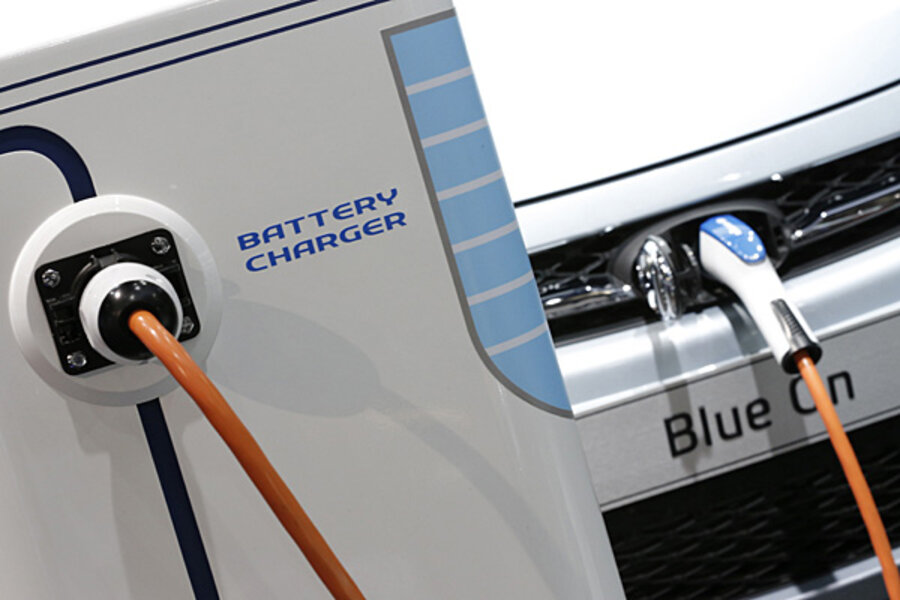No, the electric car is not a failure
Loading...
They pop up like weeds, these "Electric cars are failures" articles--and you just have to keep killing them.
The latest is an opinion piece titled, "Why the Electric Car Failed," published last week in U.S. News & World Report.
Author Michael Lynch identifies himself as a researcher for the petroleum industry.
To judge by his confrontational tone in the comments, Lynch may have been caught off-guard by a flood of contradictory responses to his piece.
This isn't uncommon when writers lack knowledge and perspective on how the auto industry works, and know little or nothing about the long-term cost curves of electric and gasoline cars.
Lynch's basic point--that the needs and desires ofcar buyers dictate which vehicles they buy--is absolutely correct.
But he deems plug-in electric cars a sales failure--after less than two years on the market--because, he says, consumers don't want them.
In fact, most car buyers have no idea that plug-in cars are on sale at all. It's early, early days yet.
Lynch trots out several hoary old chestnuts: Batteries have been with us more than 100 years, electric cars failed in the 1910s, so why would this time be any different?
He apparently doesn't know that only in the last 20 years have we moved beyond lead-acid battery chemistry. Large-format lithium-ion cells, with four times the energy density of lead-acid, entered production just in the last few years.
Fifteen years ago, the 16-kilowatt-hour lead-acid pack in GM's EV1 weighed 1,200 pounds. That same energy content in the Chevrolet Volt's lithium-ion pack weighs just over 300 pounds.
That weight reduction makes modern electric cars possible.
Then Lynch cites lower-than-expected sales of electric cars as proof that the concept has failed (along with Shai Agassi's resignation as Better Place CEO).
Well, last year, U.S. buyers took home roughly 17,500 plug-in cars. This year, that number will more than double. Next year, it may triple.
The overall proportion of plug-ins in the global fleet will remain low over this decade; most analysts project that plug-ins will be 1 to 2 percent of a 100-million-unit annual global output by 2020 or 2022.
But if Lynch were to look out 15 years, he might gain a broader perspective.
First, the EPA itself has estimated that gasoline car prices will rise $3,000 in real dollars from 2012 to 2025 to meet new CAFE standards.
Second, Li-ion cell costs will fall 6 to 8 percent a year on average, so starting in about 2020 you get some interesting numbers.
By 2020, gasoline cars will be more expensive, and gasoline will presumably cost more as well--thoughnew cars will use less of it.
Plug-ins already cost one-third to one-fifth as much per mile to operate as gasoline cars, of course, depending on your local electricity rates.
Meanwhile, plug-in electric cars will cost significantly less and they may also have longer ranges. Most analysts feel 120 miles of "real-world" electric range is enough to assuage range anxiety and meet drivers' daily needs.
As those two cost lines come closer--and then cross, as they inevitably will--consumers will start to understand that plug-ins can be viable alternatives to gas cars on the basis of purchase cost.
When that happens--as many commenters pointed out--buyers will start to discover that electric cars are simply nicer to drive: smoother, quieter, and torquier than equivalent gasoline cars.
That's when everything starts to change.
It won't happen this year. It won't happen next year.
But technology innovations often take a long time to reach the mass market.
In the case of cars, they're often encouraged (or mandated) by regulation--as is the case for the first few years of modern plug-in electric vehicles.
But to Lynch's basic point, consumers will buy the car they feel is the best and cheapest way to meet their needs.
As electric cars get cheaper, and gasoline cars more expensive, that's exactly what will happen--perhaps 10 or 12 years from now, possibly sooner.
We might gently suggest Lynch take a longer look at the industry than simply scanning 22 months of sales.
If he did, he might come to a different conclusion.







